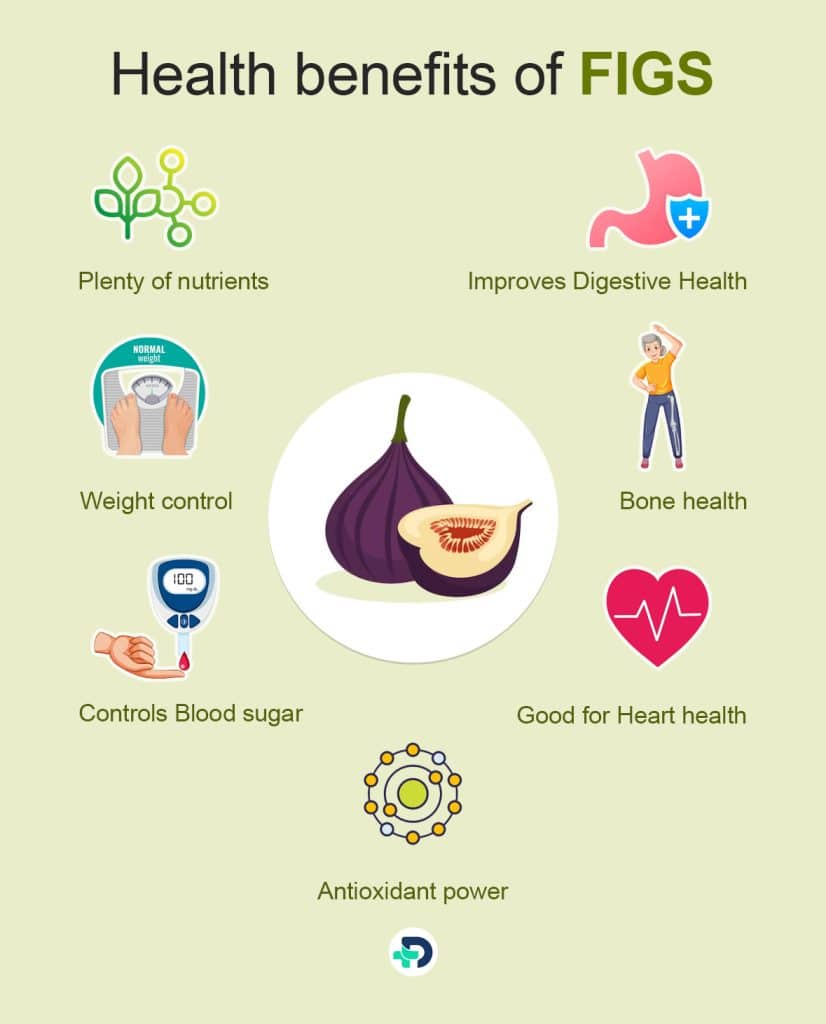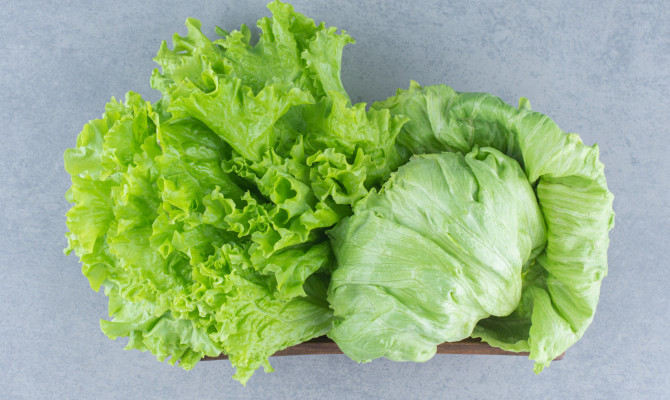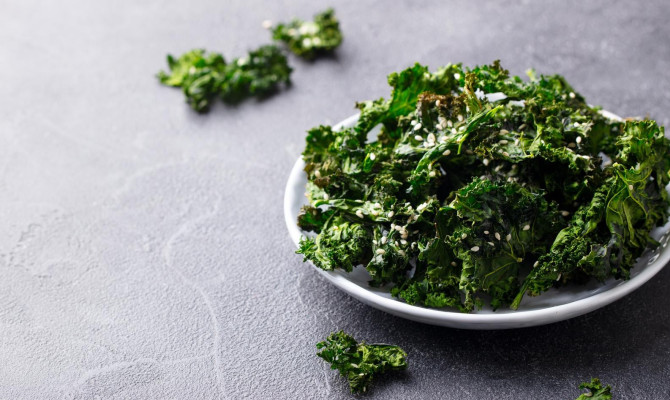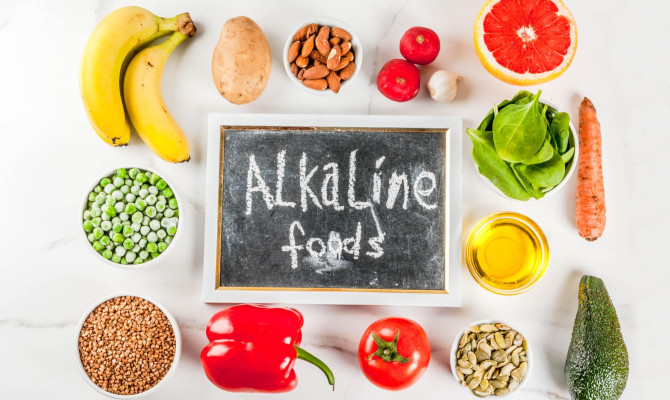Figs and its Health Benefits

- Fig
- 22 Aug 2023
Overview
About Fig
With its rich taste, distinctive texture, and tremendous flexibility, fig has mesmerized human senses. Figs are unique, and their culinary benefits have ensured their prominence in kitchens worldwide.
We shall examine the biological importance of this fruit and its physiological benefits in this article. We will also review their nutritional benefits, making them a wise choice for a balanced diet.

Health Benefits

Figs Health benefits
- Provides nutrients
- Improves Digestive Health
- Gives goodness of Antioxidant
- Enhances Heart health
- Helps in Blood sugar control
- Ensures Weight management
- Improves Bone health
Both fresh and dried figs provide several health advantages that improve general well-being. Here are a few examples:
Plenty of nutrients
- Vitamins (such as vitamins A, K, and B6), minerals (such as potassium, calcium, magnesium, and copper), and dietary fiber are all abundant. These are essential for maintaining several biological processes, including digestion support, bone health support, and general vitality promotion.
Improves Digestive Health
- They are a great source of dietary fiber, which helps to keep the digestive system in good shape.
- The high fiber content encourages regular bowel movements, reduces constipation, and generally encourages the health of the gastrointestinal tract.
- They also include the enzymes ficin and bromelain, which help to break down proteins and facilitate better digestion.
Antioxidant power
- They contain a lot of antioxidants called polyphenols and flavonoids. These powerful compounds help the body fight off harmful free radicals, which reduces oxidative stress and inflammation.
- Additionally, they help maintain a robust immune system, safeguard cells from harm, and may reduce the chance of developing chronic illnesses.
Good for Heart health
- Figs’ potassium concentration is good for preserving heart health. By neutralizing the effects of sodium, potassium aids in blood pressure regulation and supports good cardiovascular function.
- Additionally, fiber can help lower cholesterol levels, which lowers the chance of developing heart disease.
Controls Blood sugar
- Despite their natural sweetness, they have a low glycemic index, which means that when eaten in moderation, they have little effect on blood sugar levels.
- They are a good choice for those with diabetes or those trying to control their blood sugar because of the fiber content, which reduces the rate at which sugars are absorbed into the system.
Weight control
- They may be a valuable supplement to a strategy for managing weight. The fiber encourages feelings of fullness and helps with appetite control, lowering the risk of overeating.
- Furthermore, figs’ inherent sweetness can be used in sweets without requiring too many calories.
Bone health
- They include several minerals, such as calcium, magnesium, and phosphorus, crucial for preserving healthy bones and avoiding diseases like osteoporosis.
- Together, they maintain bone structure, density, and overall health.1Health benefits| Researched based study from Nlm.nih.gov ,2Health benefits| Researched based study from Nlm.nih.gov ,3Health benefits| Researched based study from Nlm.nih.gov
Nutrition
Nutritional profile of Figs
They are a delicious and healthy fruit consumed for a very long time. They contain a variety of minerals and have several health advantages.
The nutritional profile of a raw fig of typical size (weighing about 50 grams) is broken down as follows:
- Calories: 37
- Carbohydrates: 9.6 grams
- Dietary fiber: 1.4 grams
- Sugars: 8 grams
- Protein: 0.4 grams
- Fat: 0.2 grams
- Saturated fat: 0 grams
- Trans fat: 0 grams
- Monounsaturated fat: 0.1 grams
- Polyunsaturated fat: 0.1 grams
Vitamins
- Vitamin K: 2 micrograms (mcg)
- Vitamin B6: 0.05 milligrams (mg)
- Folate: 3 mcg
Minerals
- Potassium: 116 mg
- Calcium: 17 mg
- Magnesium: 8 mg
- Phosphorus: 8 mg
- Iron: 0.2 mg
They also include trace levels of other vitamins and minerals, including Copper, C, A, E, thiamin, riboflavin, and niacin. Additionally, they are a vital source of antioxidants, mainly phenolic compounds, associated with several health advantages.
Their nutritional makeup might vary slightly based on the fruit’s variety and level of maturity. Additionally, since the water has been removed, dried fruits and vegetables have more nutrients and calories than fresh ones.4Nutrition| Researched based study from Usda.gov
Side effects
Figs side effects
Allergic reactions
- They may cause allergies in certain people. They can range in intensity and present with symptoms like itching, hives, swelling, breathing difficulties, or in more severe cases, anaphylaxis. It’s crucial to avoid figs and other fruits if you have a known sensitivity to them.5Side effects| Researched based study from Karger.com
Digestive problems
- They include natural sugars like fructose, which can upset the stomach, especially in big doses. Bloating, gas, diarrhea, or stomach cramps could result from consuming excessive figs.6Side effects| Researched based study from Researchgate.net
Elevated potassium content
- They contain a fair amount of potassium, which is generally advantageous for most people. However, those with kidney issues or taking medications, such as some blood pressure medications, that alter potassium levels may need to watch the amount of figs they eat. For sure, folks, consuming too much potassium can cause problems.8Side effects| Researched based study from Researchgate.net
Oxalate level
- They contain oxalates, which are organic compounds in various fruits and vegetables. High oxalate intake might cause kidney stones to form in some individuals.
- It can be wise to decrease your input if you have a history of kidney stones or are at risk of getting them.7Side effetcs| Researched based study from Ucikidneystonecenter.com
Cross-reactivity in allergy
- Some people may develop oral allergy syndrome when exposed to specific pollens, such as birch or grass pollen.
- Itching or tingling in the mouth, lips, or throat may result.
- Cross-reactivity is the term for when the immune system of the body mistakes similar proteins in various substances.5Side effects| Researched based study from Karger.com
Usage
How to incorporate Figs into your Diet?
Fresh figs
- Eating them fresh is one of the easiest ways to enjoy them. Remove the stem from the figs, rinse them in cool water, and consume them immediately. For a touch of sweetness, slice them and add them to salads, yogurt, or porridge.
A dried fig
- They can be used in various recipes and have a concentrated flavor when dried. They are a practical choice for nibbling while traveling. You may cut them up and throw them into trail mix, oatmeal, or baked goods like muffins or cookies.
Smoothies
- You should blend fresh or dried figs with your preferred fruits, like bananas, berries, or mangoes, as well as some liquid, like almond milk or coconut water. This produces a fruit smoothie that is both delicious and filling, full of vitamins, fiber, and antioxidants.
Spread or jam
- You can make your jam or spread it by boiling it with a small amount of sweetness, such as honey or maple syrup. This can be sprinkled on top of crackers, toast, yoghurt, and cheese.
Desserts
- They can be used in many different dessert dishes. They combine well with cheese, so you may serve sliced figs with goat or blue cheese to make a straightforward yet exquisite dessert. They can also make fruit crisps or baked into cakes or tarts.
Fig salad
- To add a touch of sweetness to salads, slice fresh figs. They are effective in both grain and green salads. Mix them with leafy greens, nuts, cheese, and vinaigrette dressing for a light, tasty salad.
Fig-infused dishes
- Additionally, they can be used in savory meals. They can be used as a topping for meats like chicken or hog and grilled or roasted. They can also be used to stuff vegetables like bell peppers and mushrooms and flavor savory sauces and chutneys.
Any feedback on this article?
 This Articles content was accurate
This Articles content was accurate Very Informative Article
Very Informative Article I have a question or a comment
I have a question or a comment
 This article contains inaccurate content
This article contains inaccurate content This article was not helpful
This article was not helpful I have a question or a comment
I have a question or a comment
We appreciate your helpful feedback!
Checkout our social pages
References
-
National Library of Medicine
Phytochemical Composition and Health Benefits of Figs (Fresh and Dried): A Review of Literature from 2000 to 2022 | Health Benefits
-
National Library of Medicine
Industrial Application and Health Prospective of Fig (Ficus carica) By-Products | Health Benefits
-
National Library of Medicine
Phytochemical Composition and Health Benefits of Figs (Fresh and Dried): A Review of Literature from 2000 to 2022 | Health Benefits
-
U.S. DEPARTMENT OF AGRICULTURE
Figs, raw | Nutrition
-
Karger AG
Oral Allergy Syndrome to Fig | Side effects
-
Research Gate
The functional food properties of figs | Side effects
-
UCI KIDNEY STONE CENTER
Oxalate Contents of Foods | Side effects
-
Research Gate
Dietary Approach to Recurrent or Chronic Hyperkalaemia in Patients with Decreased Kidney Function | Side effects






































